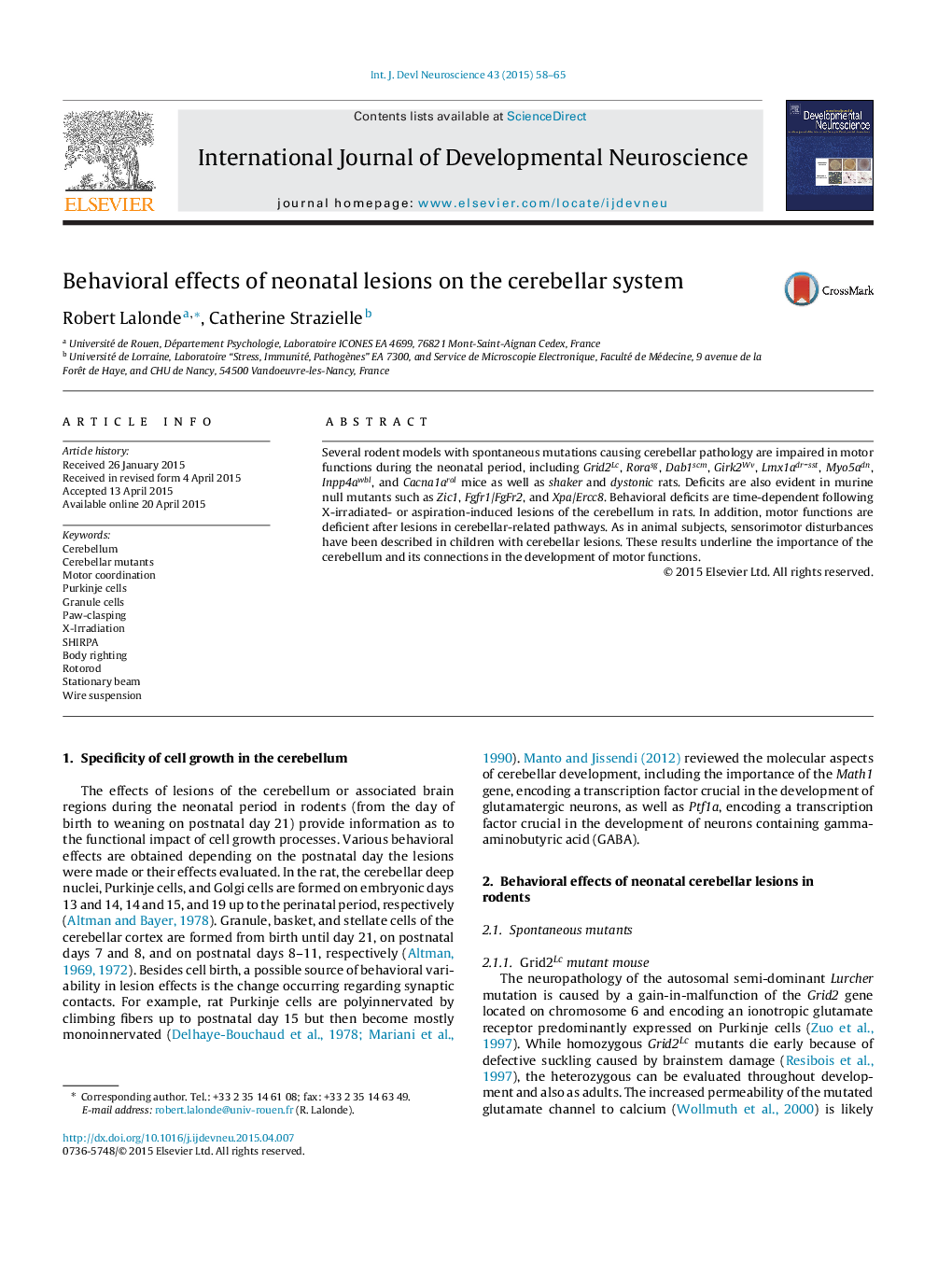| Article ID | Journal | Published Year | Pages | File Type |
|---|---|---|---|---|
| 2785714 | International Journal of Developmental Neuroscience | 2015 | 8 Pages |
•Spontaneous cerebellar mutants have deficient motor coordination.•Motor deficits are found in cerebellar null mutants.•Motor deficits are found after X-irradiation of cerebellum.•Motor deficits are found after aspiration cerebellar lesions.•Motor deficits are found in cerebellar-related pathways.•Motor deficits are found in children with cerebellar lesions.
Several rodent models with spontaneous mutations causing cerebellar pathology are impaired in motor functions during the neonatal period, including Grid2Lc, Rorasg, Dab1scm, Girk2Wv, Lmx1adr-sst, Myo5adn, Inpp4awbl, and Cacna1arol mice as well as shaker and dystonic rats. Deficits are also evident in murine null mutants such as Zic1, Fgfr1/FgFr2, and Xpa/Ercc8. Behavioral deficits are time-dependent following X-irradiated- or aspiration-induced lesions of the cerebellum in rats. In addition, motor functions are deficient after lesions in cerebellar-related pathways. As in animal subjects, sensorimotor disturbances have been described in children with cerebellar lesions. These results underline the importance of the cerebellum and its connections in the development of motor functions.
